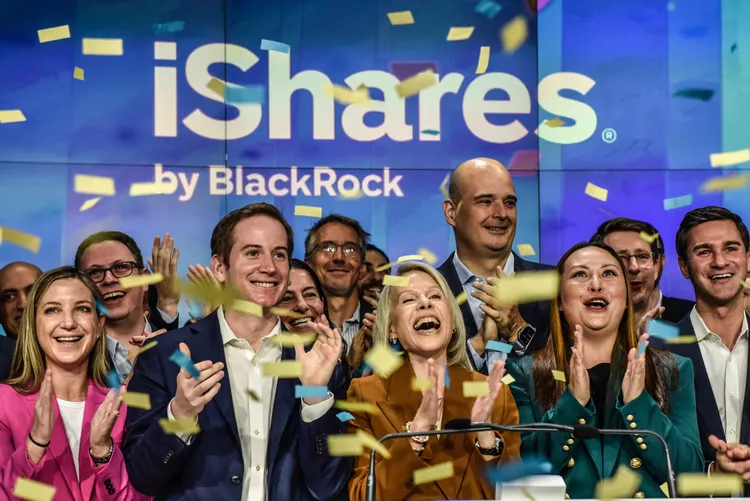The world of cryptocurrency exchange-traded funds (ETFs) has seen significant changes since the launch of spot Bitcoin ETFs in January 2024. With cryptocurrency prices on the rise and fees dropping, the competition among major fund managers has intensified.
One of the largest players, BlackRock, has reduced its Bitcoin ETF fee to just 0.12% on the first $5 billion in assets—this is less than half of what it initially charged. Other companies, including Franklin Templeton and Bitwise, have also lowered their fees and introduced temporary fee waivers in an effort to attract more investors.
Key Points to Know:
- Many crypto ETF providers have lowered their fees since launch, with some offering zero-fee promotions for a limited time to draw in more investors.
- BlackRock’s iShares Bitcoin Trust (IBIT) now charges a mere 0.12% on initial assets, making it more affordable than many traditional commodity ETFs.
- While crypto ETFs are becoming more appealing for retirement accounts, they still come with significant risks due to their volatility.
What Is a Crypto ETF?
A crypto ETF works by tracking the value of cryptocurrencies such as Bitcoin or Ether. These funds hold a large amount of cryptocurrency and allow investors to buy shares in that pool. Unlike buying cryptocurrency directly, crypto ETFs are traded on traditional stock exchanges, which makes them easier to include in 401(k)s or individual retirement accounts. There are two main types of crypto ETFs: spot ETFs, which hold actual cryptocurrencies, and futures-based ETFs, which track cryptocurrency derivatives (contracts based on crypto values).
Since the introduction of spot Bitcoin ETFs in January 2024, more than $39 billion has flowed into these funds. To put this in perspective, that’s more than the entire market value of the iShares Gold Trust (IAU), a top gold ETF.
Why Are Fees Dropping?
An expense ratio is the annual fee an ETF charges to cover its operational costs, expressed as a percentage of the fund’s assets. For instance, a fee of 0.12% means you’d pay $12 annually for every $10,000 you have invested in the fund.
Since the debut of spot Bitcoin ETFs in 2024, fees have significantly decreased. Prior to launching, fund managers had already started lowering their planned fees in response to the growing competition in the market.
When trading started in January 2024, fees ranged from 0.20% to 1.50%, with most providers charging around 0.25%.
BlackRock has taken the lead by lowering its fee to 0.12%, and several other providers have offered temporary zero-fee promotions on their initial assets. On the higher end, Grayscale’s Bitcoin Trust ETF is still the most expensive at 1.50%, but this is down from 2%.
This aggressive competition is the result of several factors. First, Wall Street firms are vying for a share of the growing crypto ETF market.
Traditional investment firms like BlackRock and Fidelity see crypto ETFs as a critical area for growth, especially with cryptocurrency prices climbing since the launch of these ETFs.
Bitcoin and Ether, for example, saw increases of 125% and 48% in 2024, respectively. As a result, fund managers are willing to accept lower profit margins to attract investors, as many of these funds essentially hold the same cryptocurrencies.
Why Lower Fees Matter
The difference between a 0.25% and a 0.12% fee might seem small at first, but over time, these savings can lead to a significant increase in your investment returns due to compound interest. Here’s how it plays out over 30 years with a $10,000 investment growing at an average annual rate of 8%, before fees:
- With the original 0.25% fee: Your $10,000 would grow to about $93,000.
- With the new 0.12% fee: Your $10,000 would grow to about $97,000.
That’s a $4,000 difference in returns. Over time, more of your money stays in your account instead of going toward management fees. This impact is even more significant with larger investment amounts.
The Bottom Line
The reduction in fees for crypto ETFs signals a big change in how everyday investors can gain exposure to digital assets through retirement accounts.
While the fees for crypto ETFs are still higher than those for traditional index funds, they are now more affordable than many commodity ETFs, and much lower than just a year ago.
However, investors should remember that even though lower fees make crypto ETFs more accessible, they still carry the same risks associated with cryptocurrency investments, which are known for their volatility.
Join Gen Z official Whatsapp Channel To Stay Updated On time the ongoing situation https://whatsapp.com/channel/0029VaWT5gSGufImU8R0DO30


